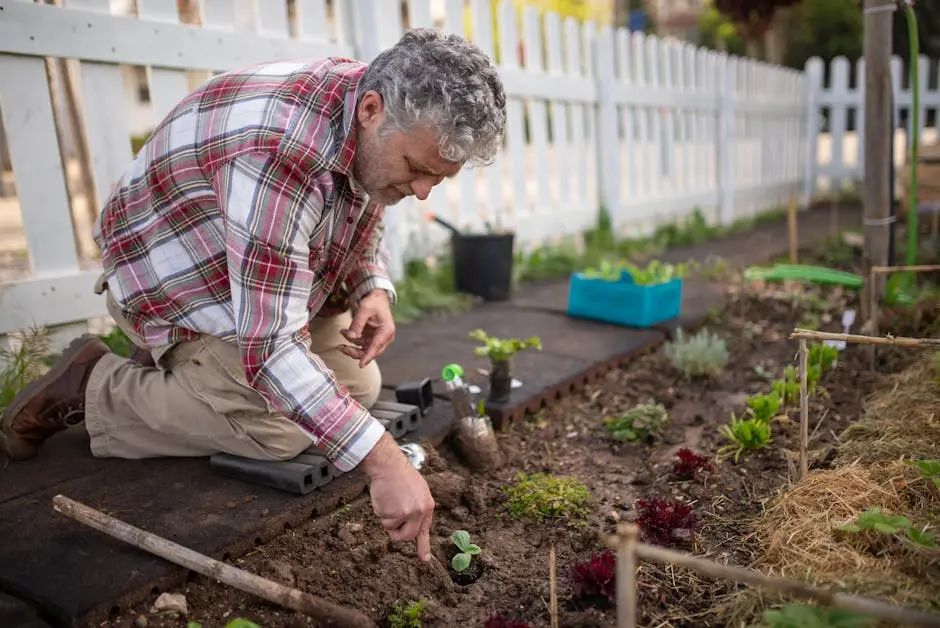How Can I Incorporate Sustainable Practices Into My San Jose Landscape?
Are you looking to transform your San Jose landscape into an eco-friendly oasis? Incorporating sustainable practices not only benefits the environment but also enhances the beauty and health of your outdoor space. Let's explore some simple steps to make your garden more sustainable.
Choose Native Plants
Native plants are well-suited to the local climate and require less water and maintenance. This makes them a perfect choice for a sustainable garden in San Jose. They are naturally adapted to the local soil and weather conditions, which means they need less chemical intervention to thrive. Additionally, planting native species supports local wildlife, offering food and shelter to birds and insects, creating a balanced ecosystem right in your backyard.
If you're unsure about which native plants to choose, consider consulting a native plant guide. These resources provide detailed information on the types of plants that thrive in the San Jose area, including their sunlight, soil, and water needs. By investing in native flora, you'll not only enhance the natural beauty of your space but also contribute positively to the environment.
Furthermore, native plants often exhibit a range of beautiful colors and scents throughout the seasons, providing year-round interest in your garden. Because of their low maintenance requirements, you'll spend less time working in your garden and more time enjoying its beauty. You can also explore how native plants can be integrated creatively into traditional garden designs to achieve a modern yet sustainable aesthetic.
Implement Water Conservation Techniques
Utilize drip irrigation systems and consider rainwater harvesting to minimize water usage. This can significantly reduce your water bill and conserve precious resources. Drip irrigation targets the root zones of plants, delivering water efficiently and reducing evaporation. This method not only conserves water but also encourages deep root growth, enhancing plant health.
Rainwater harvesting is another efficient technique to consider. By collecting and storing rainwater, you ensure a supply of chemical-free water for your plants, even during dry periods. Various systems, ranging from simple barrels to complex tanks, can be installed depending on your landscape's needs and your budget. Information on setting up these systems can be found in many rainwater harvesting guides.
More advanced water conservation techniques include using gray water systems, which recycle water from inside your home for irrigation purposes. Moreover, consider landscaping with drought-resistant plants and utilizing mulch to retain soil moisture. Integrating these methods not only benefits your garden but also aligns with broader environmental conservation efforts.
Create a Compost Pile
Making your own compost helps reduce waste and enriches the soil with natural nutrients. It's a simple and effective way to promote plant growth sustainably. Composting involves collecting organic waste materials such as vegetable scraps, grass clippings, and fallen leaves, which decompose over time into a rich soil amendment.
To start composting, designate a section of your garden or use a compost bin to contain materials. Regularly turning your compost will speed up the decomposition process and ensure a well-balanced mix of nutrients. Using compost in your garden can lead to improved plant growth, healthier soil, and reduced reliance on synthetic fertilizers.
For those new to composting, resources on starting a compost pile can be incredibly helpful. These guides offer step-by-step instructions on the best practices for creating and maintaining a compost system that suits your garden's size and your personal needs. Remember, the act of composting not only benefits your landscape but also reduces the amount of waste sent to landfills.
Use Sustainable Materials for Landscaping
Opt for recycled or renewable materials when adding hardscaping elements like paths or garden beds. This reduces environmental impact and adds a unique touch to your landscape. Recycled materials such as reclaimed wood, bricks, or stones can be used creatively in your garden, providing both function and an aesthetic appeal.
Incorporating sustainable materials not only supports environmental conservation but also results in cost savings. Often sourced at lower prices, recycled materials bring an eco-friendly appeal to any garden project. Consider visiting local suppliers or salvage yards in San Jose for unique, sustainable materials. Resources such as sustainable landscaping materials can offer inspiration and practical advice for your projects.
Moreover, when choosing plants for your landscape, use natural fertilizers and organic pesticides to maintain healthy plant growth. Using sustainable options in all aspects of your garden helps build a healthier ecosystem and promotes biodiversity. This holistic approach to landscaping ensures that your outdoor space doesn’t just look good, but is also environmentally sustainable.
Embrace Sustainability for a Greener Future in Your Garden
Incorporating sustainable practices into your San Jose landscape is easier than it may seem. By choosing native plants, conserving water, making your own compost, and incorporating renewable materials, you are taking significant steps toward an eco-friendlier garden. These practices not only help the environment but also add to the beauty and sustainability of your landscape. Enjoy your green journey!

